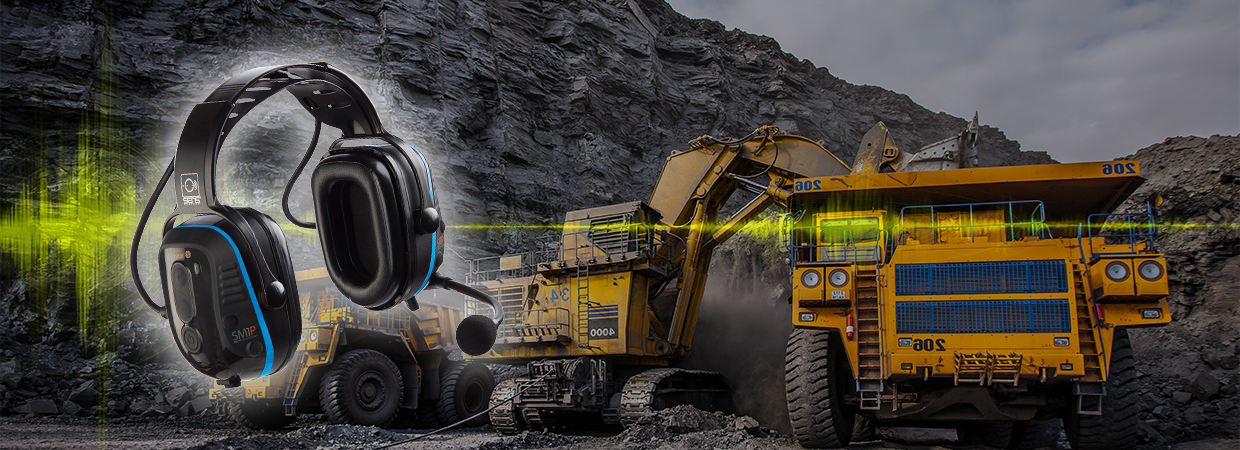- Home
- Blog
- High-Noise Communication
- The Industrial Communication Arena is Changing

The Industrial Communication Arena is Changing
High Noise Communication Needs
As I sit down and talk with end-users and partners about their high noise communication needs, it is clear the way workers communicate in industrial environments is undergoing rapid change.
The proliferation of digital communication devices now available in these environments has grown dramatically and it’s opening up new options for industrial companies to improve their communication strategies.
Communication is all about enhanced productivity and many of these devices offer not only improvements in the way workers communicate but how they communicate.
Industrial Communication Devices
Just like the consumer space, industrial communication devices are getting smarter with improved functionality, and the additional ability to handle more than just voice communication is broadening their role in the industrial sector.
What I’m also observing is the market extension of consumer devices such as smartphones and tablets starting to find a place in industrial environments. This is causing the traditional industrial communication device players to work harder and innovate to stay ahead of the curve.
Digital Bluetooth® Wireless Technology Communication Headsets
The change in the capabilities of digital communication headsets and the explosion of Bluetooth® wireless technology as a platform on which workers connect to their devices are at the center of this transformation in the industrial sector.
In turn, this is fundamentally changing the performance and capabilities of the headsets that need to be connected to these devices as each device and technology platform requires a unique adaptation to connect with.
I will address a range of different applications for these new devices in future posts but let me first look at how digital technology is allowing customization to solve some very interesting high noise industrial communication challenges:
Digital Allows for Smart Customization
High noise industrial environments represent their own challenges as it relates to communication. In many instances, you can’t rely on the communication device to carry the audio signal effectively without the loud ambient noise interfering with the clarity.
In most noise environments over 85 dB(A), workers are complied to wear hearing protection that dictates unique requirements on the headsets that are suitable for both hearing protection and communication.
When workers are working at extreme noise levels the problem becomes even more challenging, and headsets become a critical part of the communication process.
Sensear's High Noise Communication Headsets
High Noise Headsets that are powered by digital signal technologies are well placed for these challenges as they can be modified and customized depending on the noise level and digital device they need to be connected to.
One of our customers in the Oil and Gas industry had significant challenges enabling their workers to communicate at noise levels that reached in some instances 120 dB(A). Because of the extreme noise levels they had a requirement for double protection (earplug and earmuff combination), which limited their options of finding a solution for their IDEN Bluetooth® wireless technology enabled two-way radios.
Because Sensear’s headsets use cutting edge digital technology, we were able to customize headsets to solve two problems in one:
- To address the extreme noise issue Sensear recommended a solution that involved adjusting the volume limiter (which is normally set at 82 dBA) in the headset to 90 dB(A) that enhanced the communication volume while the worker wore a low NRR earplug under the headset. The end result was a double protection solution that enabled effective communication in the extreme noise environment.
- Because the IDEN two-way radios are Bluetooth® wireless technology enabled, Sensear was able to customize its firmware to connect wirelessly to the radios so the user could have a cable-free solution with full PTT capabilities on the headset. The major advantage of this solution was that when workers entered a quiet area and wanted to remove their headset they could use the two-way radio normally without removing the cable. This represented a major convenience and productivity benefit for the users
Applications like this are an example of how headsets can be customized to meet the evolving digital capabilities of new industrial communication devices. The end result is improved productivity and enhanced safety through effective communication.
In the next blog, I’ll discuss the growing use of Bluetooth® wireless technology and how this is opening up huge productivity benefits for industrial companies.






